Who were the most famous “Hitchcock Blondes”?
Quick Answer: Hitchcock didn’t have a blonde in every picture, but all the films for which he is most remembered have one in the forefront. His blondes are as beautiful as they are mysterious and contradictory, helping shape the pictures into masterpieces of suspence. Kim Novak, Eva Marie Saint, Janet Leigh, Grace Kelly and Tippi Hedren are among the auteur’s most memorable blondes.
Alfred Hitchcock did make films that didn’t star blonde women, but all of his most remembered pictures center on a Hitchcock Blonde. He claimed his interest in blondes was cinematically motivated, suggesting they photographed better in black-and-white and serviced his narrative better due to the surprise factor when their subversive actions undermined their cool blonde exteriors. Others have suggested his interest is explained by sexual repression, and his preference for blondes was his way of creating perfect women whom he could control—a subject studied in other productions, including 2012’s The Girl, depicting the obsessive relationship between Hitchcock and actress Tippi Hedren. Either way, the blondes he cast and the characters they played were pivotal to many of Hitchcock’s most beloved pictures. Here is a look at some of the most renowned.
Grace Kelly
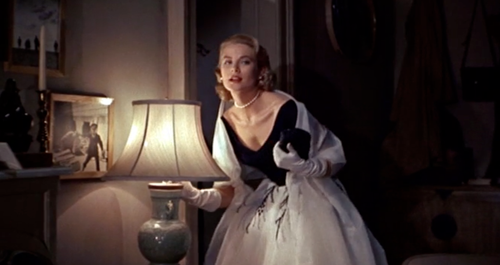
Grace Kelly is arguably Hitchcock’s most notable and iconic blonde. An immortal of the silver screen, Kelly filmed Dial M For Murder (1954), Rear Window (1955) and To Catch a Thief (1955) with Hitch in the span of two years and appeared in all of his earliest huge successes. Her character in Rear Window, Lisa Fremont, enters the film with such poise that the scene survives as one of the great moments of film history. She’s the Lisa Fremont who never wears the same dress twice.
It’s hard to imagine considering her less than a perfect woman, yet the irony of Rear Window is that Lisa Fremont embodies all the male characteristics of the film. The protagonist, Jeff (James Stewart) is wheelchair-bound and unable to physically investigate the crime he thinks has been committed in his neighborhood. He ropes the allegedly innocent and untarnished Lisa into doing his dirty work, allowing her to dominate the action. Almost all films of the time focused on male-oriented heroes and women who needed saving. Here, Hitchcock used Kelly to reverse that stereotype, showing a glamorous woman can have an edgier, modern side.
Moreover, while Kelly is easily any heterosexual man’s fantasy woman, Lisa is forced to push and prod her man into the idea of marrying her, and she is willing to use all the charms at her disposal to persuade him. The reversals in the sexual dynamic between the couple is not only modern but also feels edgier when packaged with Kelly’s classic cool elegance and untouchable style.
Kim Novak
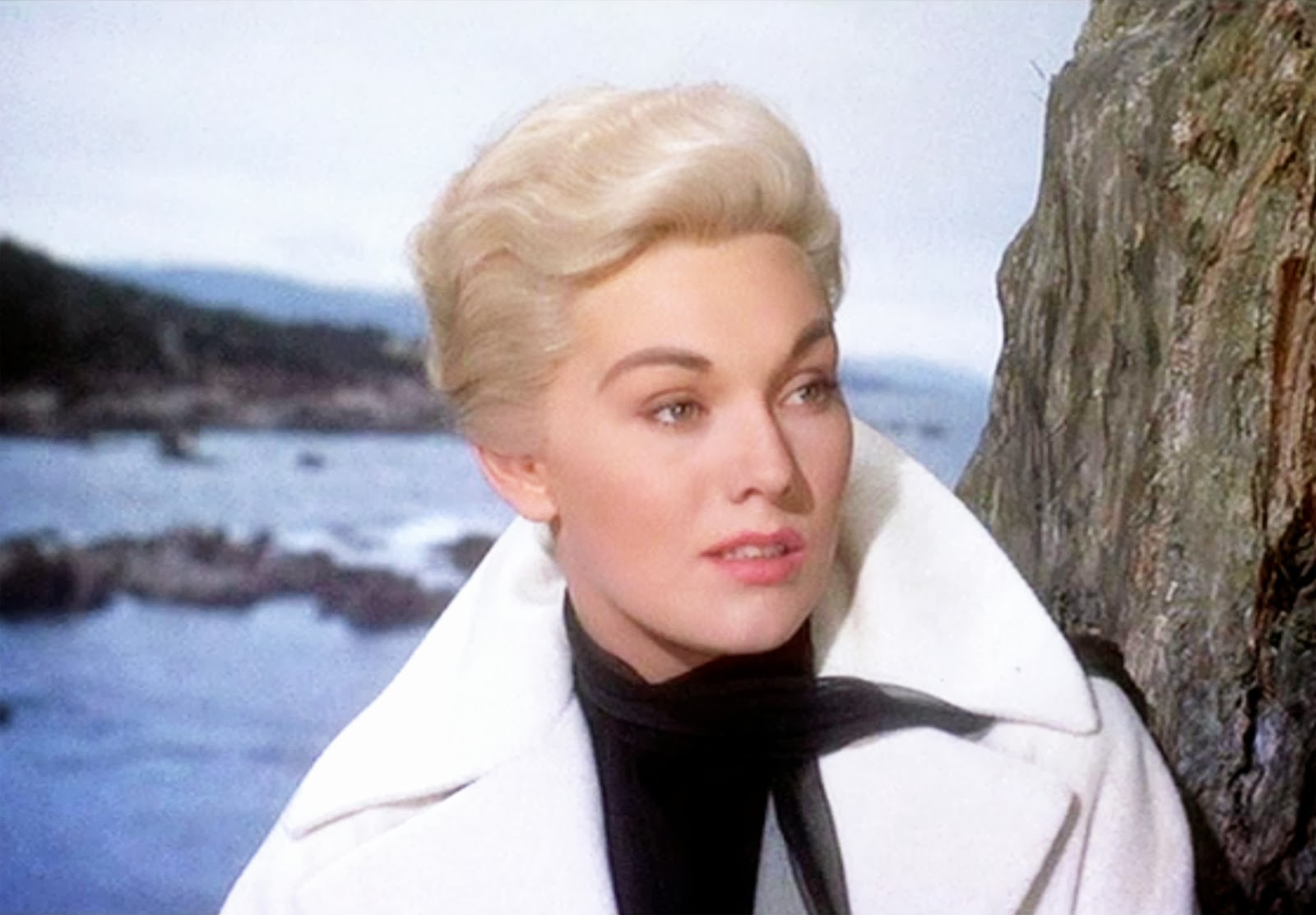
Vertigo (1958) placed 25 year-old Kim Novak in the dual roles of Judy and Madeleine. Vertigo is a widely-acclaimed film often said to reflect Hitchcock’s relationships with his leading ladies throughout the years. Here, Novak’s blondeness is actually integral to the plot, so much that twice-her-age James Stewart puts a wig on Judy so she’ll look like Madeleine, the woman he loved and lost. Stewart’s character, Scottie, is bedeviled by manipulating the physical appearance of Judy to create a “new” Madeleine. The film is quite blatantly about fixation and obsession. Novak’s performance is haunting and dark, bringing a complexity and inner unrest to the soul of the woman she portrays, with a personality that can be manipulated on a whim. Vertigo is arguably Hitchcock’s most famous film, largely because of the complexity of its leading blonde, the conviction of Novak, and the autobiographical way it looks at its director.
Eva Marie Saint
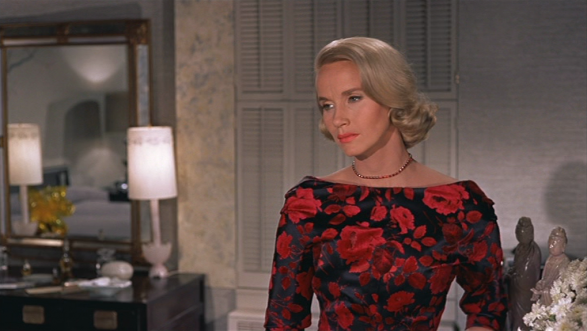
Eva Marie Saint plays Eve Kendall in North by Northwest (1959) opposite Cary Grant’s Roger Thornhill. About Saint’s appearance, Hitchcock had her long hair cut short, saying, “Short hair gives Eva a more exotic look, in keeping with her role of the glamorous woman of my story. I wanted her dressed like a kept woman - smart, simple, subtle and quiet. In other words, anything but the bangles and beads type.” Like Kelly’s Lisa Fremont, Eve Kendall is a woman who doesn’t need a man to help her along. Her alliances to Thornhill even appear to flip-flop during the picture until the major twist is revealed, and Kendall is every bit as intelligent as she is attractive. We don’t know her truths until the end of the picture, through a classic sense of Hitchcockian misdirection.
Tippi Hedren
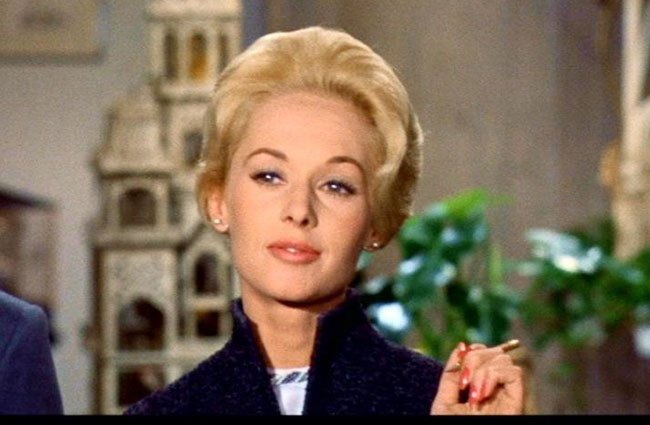
After Saint, Hitchcock introduced the world to then-unknown Tippi Hedren. She first appears in The Birds (1963), a film metaphorically about the manifestation of sexual desire, starring a pristine blonde who enters a man’s life and throws his relationships with the other females who care about him astray. She followed that film with Marnie (1964), her peroxide blonde hair perfectly swept but atop a character not just responding to an external trouble as in The Birds, but who is stuffed with a pathology that drives the story. Marnie is a thief, blackmailed into marriage, contemplates suicide, and comes back. She is a protagonist and an object at once, morphing between femme fatale and vulnerability. The subjects of rape and prostitution were still taboo at the time, and Hitchcock explored them through Hedren.
Janet Leigh
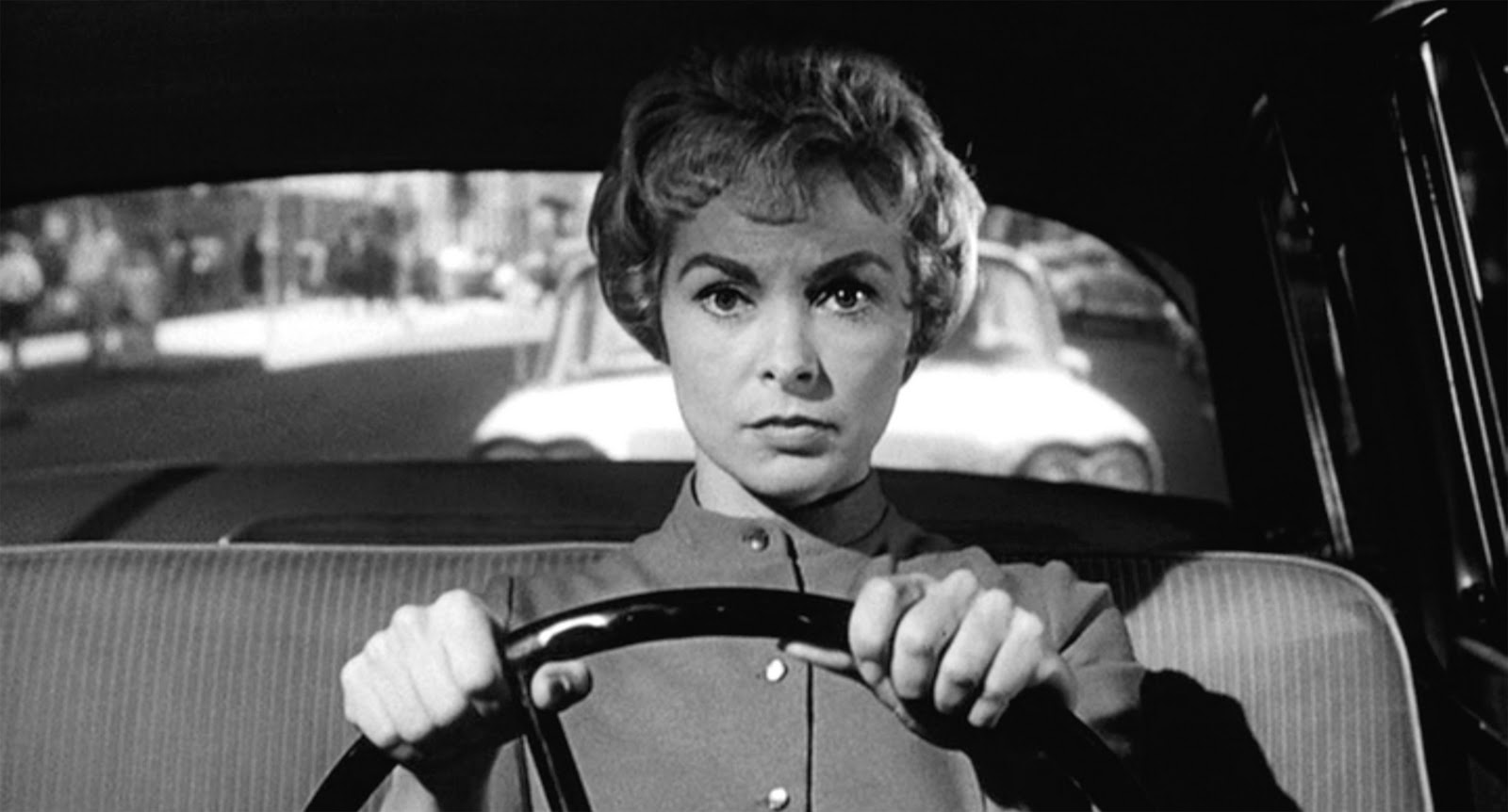
Janet Leigh’s Marion Crane in Psycho (1960) is the most iconic of the icy blondes, and a fierce lady. She’s stunning, employed, self-sufficient, and steals a wad of cash from her boss to ditch town and start a new life. When she is killed halfway through the film, it’s a startling turn of events—prior to 1960, killing your lead actress mid-way just wasn’t done. It was shocking and unexpected, and still carries that effect today.
Crane is a woman who appears to have everything put together, is liked, and seems reliable, but in the most blatant spirit of Hitchcock’s icy blondes, she can’t be trusted. Part of their allure is mystery, and Marion has plenty. She is also a woman with a plan, and because her plan is duplicitous and immoral, she takes on the role of the doomed woman. Her on-screen death is one of the most memorable in the history of cinema, and the mystery of her character dies with her.
Hitchcock’s blondes may not appear in every one of his films, but certainly do in his most popular and most remembered. There are more—Ingrid Bergman in Notorious (1946) and Spellbound (1945) and Under Capricorn (1949), Doris Day in The Man Who Knew Too Much, Madeleine Carroll in The 39 Steps (1935), the list continues. Hitch relied on these womens as a key component in making his films work. “Suspense is like a woman,” he said. “The more left to the imagination, the more the excitement.The conventional big-bosomed blonde is not mysterious. And what could be more obvious than the old black velvet and pearls type? The perfect ‘woman of mystery’ is one who is blonde, subtle and Nordic.”

